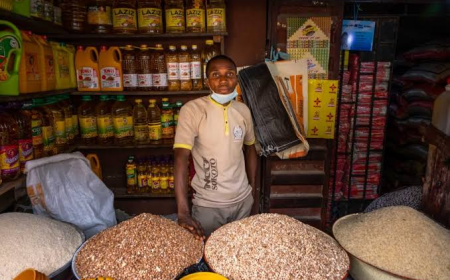A Complete Guide to Starting and Growing a Food Business: From Small Scale to Large Scale
A step-by-step guide on starting and scaling a food business, from small ventures to large enterprises, with strategies, challenges, and growth tips.

The food business is one of the most rewarding industries to invest in because everyone eats every day. Unlike some industries that thrive only in certain seasons, food is a constant necessity. Whether it’s snacks, fast food, home-cooked meals, or large-scale packaged goods, there’s always a hungry market waiting.
What makes the food industry unique is its flexibility—you can begin with almost no capital at a small scale and grow into a multi-million-dollar enterprise. In this guide, we’ll explore how to start a food business from scratch, scale step by step, and eventually grow into a large enterprise.
Why the Food Business is a Smart Choice
- Constant demand – Unlike fashion or tech trends, food will never go out of style.
- Scalability – You can start from your home kitchen and eventually grow into a factory.
- Diverse niches – Snacks, restaurants, beverages, health foods, and catering—there’s room for everyone.
- Global opportunities – With food packaging and exportation, you can move beyond local customers.
- Low entry barrier – Anyone can start with minimal knowledge and gradually improve.
Step 1: Starting Small – Building Your Food Business from Scratch
Pick the Right Niche
- Street food: Shawarma, suya, fried yam, akara, roasted corn, grilled chicken.
- Snacks & pastries: Meat pie, puff-puff, chin-chin, samosas, cakes, bread.
- Healthy foods: Smoothies, salads, fresh juices, meal prep services.
- Local & cultural dishes: Rice, beans, swallow & soups, jollof rice, egusi.
- Packaged foods: Bottled zobo, groundnuts, chips, spices, sauces.
Test the Waters
Start by selling to friends, neighbors, and co-workers. Leverage WhatsApp, Facebook, and Instagram to showcase your meals. Collect feedback to improve your recipes and packaging.
Start with Minimal Equipment
- Small stove or gas cooker
- Frying pan, pots, or oven
- Blender or juicer
- Food storage containers
Branding at Small Scale
Even if you’re selling from home, good branding sells faster. Use neat packaging, stickers with your business name, and take attractive food photos for marketing.
Step 2: Scaling Into Medium-Sized Food Business
Secure a Strategic Location
Open a restaurant, café, or food truck in busy areas like office districts, campuses, or marketplaces. Visibility is key—if people see and smell food, they’ll stop by.
Build a Team
Hire skilled cooks, waiters, delivery riders, and cleaners. Train them in customer service, hygiene, and efficiency.
Upgrade Your Equipment
- Industrial gas cookers
- Baking ovens
- Freezers and chillers
- Food processors and mixers
Expand Your Menu
Offer different categories: fast foods, traditional meals, healthy alternatives, or combo deals. Customers love variety.
Strengthen Marketing
Use flyers, banners, social media ads, and register on food delivery apps. Offer promo packages and discounts to attract more customers.
Step 3: Transitioning to Large-Scale Food Business
Register as a Company
Move from a small registration to a limited liability company. Get food safety certifications, NAFDAC approval (if in Nigeria), and trademarks.
Secure Investment
Large-scale expansion requires heavy capital. Options include loans, angel investors, or partnerships with distributors.
Expand into Multiple Branches
Open outlets in different cities or consider franchise models to grow your brand nationwide.
Food Processing & Packaging
Move into large-scale food production such as bottled drinks, frozen foods, packaged snacks, or ready-to-eat meals.
Distribution & Export
Supply supermarkets, hotels, wholesalers, and even explore export markets for local foods, spices, and snacks.
Use Technology for Growth
Adopt POS systems, build an online ordering website, and use apps for staff management, stock control, and delivery tracking.
Challenges in the Food Business
- High competition – Differentiate with taste, pricing, and branding.
- Food spoilage – Invest in refrigeration and airtight packaging.
- Staff mismanagement – Hire carefully, pay fairly, and monitor operations.
- Regulatory hurdles – Stay compliant with food safety and business laws.
Tips for Long-Term Success
- Stay consistent with taste and hygiene.
- Listen to customer feedback and adapt quickly.
- Reinvest profits to grow steadily.
- Adapt to market trends like organic and healthy foods.
- Leverage social media for marketing and brand awareness.
Conclusion
Starting a food business is one of the most practical and profitable ventures. It doesn’t matter if you’re beginning with a home kitchen or a street stall—the key is to start small, scale strategically, and dream big. With the right vision, hygiene, and branding, you can grow from a humble start into a thriving food empire.
























